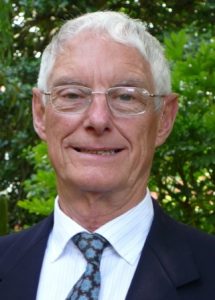
The Golden Age of British Watercolour
Wednesday 6 September 2023 at 2.00 pm at the Lowther Pavilion. Guests may attend the lecture – £10 pp (pay on door)
The lecture notes leaflet can be downloaded/printed here
Lecturer: Hugh Ellwood
 Our new 2023-24 season begins with a lecture from our President Hugh Ellwood. Hugh studied philosophy in Rome, followed by a degree in architecture at the University of Manchester. He was previously an architect partner with Building Design Partnership, the largest multi-discipline design organisation in the UK, and was for some years an external examiner in architecture at the University of Manchester. For several years he was a visiting lecturer in the history of art and architecture at the University of Central Lancashire. A watercolourist, Hugh has also lectured extensively to various societies and organisations, including cruises, on art and architecture.
Our new 2023-24 season begins with a lecture from our President Hugh Ellwood. Hugh studied philosophy in Rome, followed by a degree in architecture at the University of Manchester. He was previously an architect partner with Building Design Partnership, the largest multi-discipline design organisation in the UK, and was for some years an external examiner in architecture at the University of Manchester. For several years he was a visiting lecturer in the history of art and architecture at the University of Central Lancashire. A watercolourist, Hugh has also lectured extensively to various societies and organisations, including cruises, on art and architecture.
The Lecture
Watercolour is an extraordinarily versatile art form and is almost uniquely a British phenomenon. It embodies uncertainty, fluidity, luminosity and transparency, making it the most challenging of all the media. It was ideally suited for the 18th and 19th century sensibilities that sought a more direct encounter with the natural world. Several factors allowed watercolour to flourish and develop. Artists would accompany the aristocracy on their grand tours to make on the spot studies; technical advances in materials allowed artists to experiment; its practice extended to the leisured middle classes and watercolour societies were founded. Above all, the towering artists of the day, such as Cotman, Cox, Girtin and Turner embraced the medium and took it to standards that could be exhibited at the Royal Academy.
Caption: JMW Turner’s watercolour, Fishmarket on the Sands, Early Morning 1824. (Damobhoy, CC BY-SA 4.0, via Wikimedia Commons).








